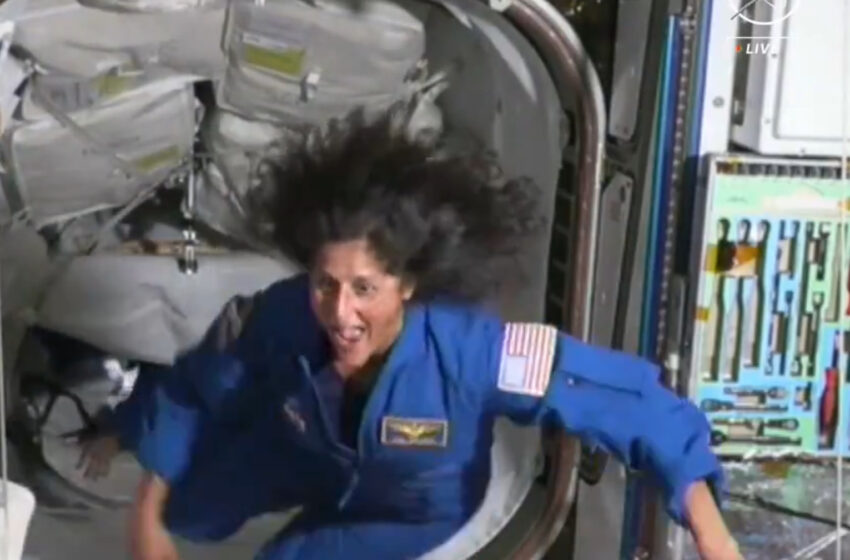Sunita Williams dances into history at International Space Station

Sunita Williams entered the International Space Station, along with flight commander Butch Wilmore, at 3:45 pm EDT Thursday. Photo credit: NASA
Indian American astronaut becomes the first woman to pilot a new spacecraft on its inaugural crewed test flight
Indian American astronaut Sunita Williams danced with joy as she arrived safely at the International Space Station (ISS) after a history-making trip as the first woman to pilot a new spacecraft on its inaugural crewed test flight.
Williams and flight commander Butch Wilmore entered the ISS at 3:45 pm EDT Thursday, a little over two hours after the Boeing Starliner spacecraft, successfully docked at 1:34 pm.
In a video posted by Boeing Space on X, Williams, 58, is seen coming out of the capsule. As she comes out, she performs a little dance in zero gravity and hugs the other astronauts at the space station.
The duo is scheduled to spend about a week on board the station, conducting tests and validating Starliner’s systems before returning to Earth for a parachute-assisted landing in the western US.
READ: Sunita Williams third space mission delayed again (May 15, 2024)
Daughter of an Indian American father from Gujarat and a Slovenian-American mother, Williams has celebrated her multicultural roots by carrying Indian and Slovenian items during her previous spaceflights.
The spacecraft launched on a United Launch Alliance Atlas V rocket at 10:52 am June 5 from Space Launch Complex-41 at Cape Canaveral Space Force Station in Florida. As part of the agency’s Commercial Crew Program, the mission is the first crewed flight for the Starliner spacecraft.
During the flight, Williams and Wilmore successfully performed manual piloting demonstrations of Starliner and completed a sleep period. Prior to crew sleep, mission teams identified three helium leaks in the spacecraft, according to NASA blog. One of these was previously discussed before flight along with a management plan, and the other two occured when the spacecraft arrived in orbit.
To monitor and manage these leaks, the three helium manifolds were closed in flight during the crew’s sleep period and were all reopened ahead of rendezvous and docking operations. After docking, all Starliner manifolds are closed per normal plans.
As Starliner began its approach to the space station, five reaction control system thrusters failed during flight. Mission teams performed a series of hot-fire tests which re-enabled four of the thrusters while the crew manually piloted the spacecraft at the station’s 200-meter hold point.
After re-selecting four of the thrusters, Starliner had the fault tolerance required to approach the space station for docking. At the 10-meter hold point, the mission team completed system readiness evaluations and proceeded with docking.
Inside Starliner for this mission is about 759 pounds of cargo, which includes food, clothing, exercise gear, medical supplies, photo and media equipment, vehicle supplies and tools, and other items. A thumb drive containing about 3,500 images of artwork from children in 35 states and 66 different countries is also set to launch aboard Starliner tonight.
Williams brought shirts from the US Naval Academy and the Sunita L. Williams Elementary School in Needham, Massachusetts. She also has a diver pin and two dog tags from her Labrador retrievers.
In 2012, during a prior trip to the International Space Station, Williams became the first person to finish a triathlon in space, during which she simulated swimming using a weight-lifting machine and ran on a treadmill while strapped in by a harness so she wouldn’t float away. That came after she ran the Boston Marathon from the space station in 2007.
Williams received her commission as an Ensign in the United States Navy from the United States Naval Academy in May 1987. She was selected as an astronaut by NASA in 1998 and is a veteran of two space missions, Expeditions 14/15 in 2006 and 32/33 and 2012.
